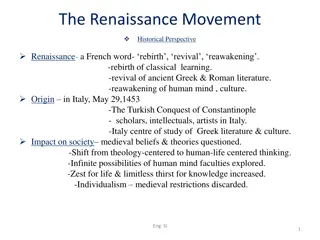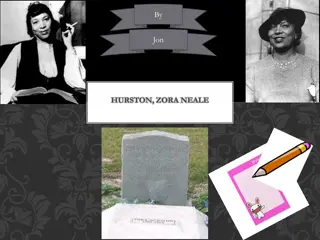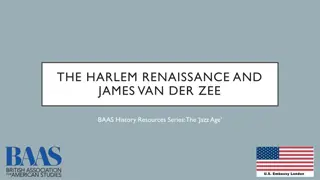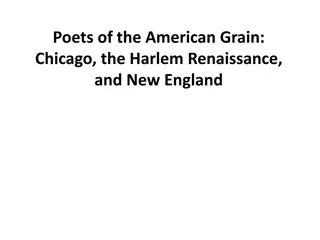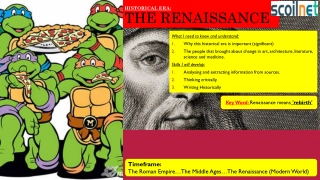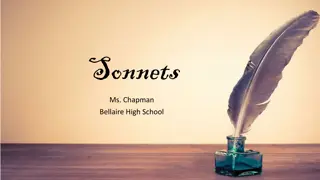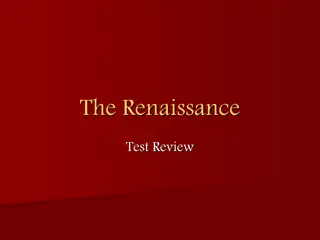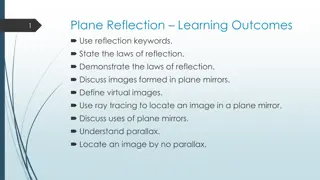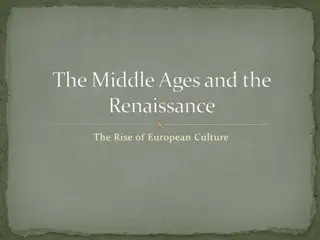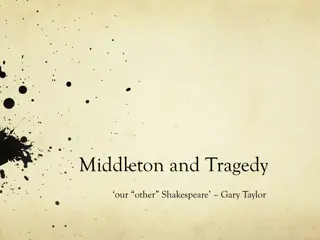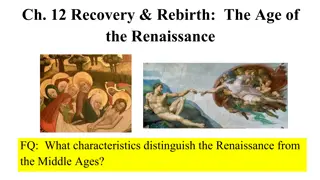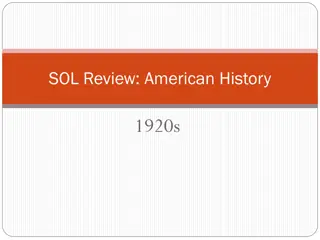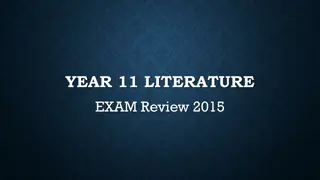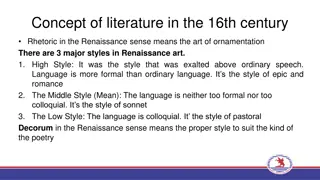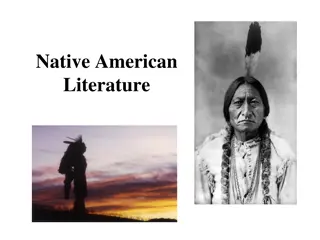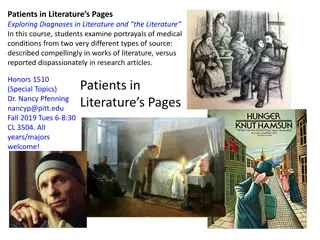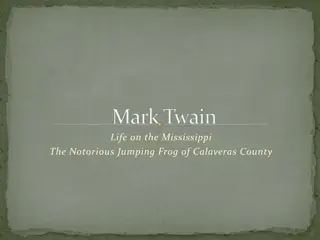Southern Renaissance: A Reflection on American Southern Literature
The Southern Renaissance in American literature, exemplified by authors like William Faulkner and Eudora Welty, emerged in the 1920s and 1930s as a response to the perceived neglect of the South. This period saw a resurgence of Southern uniqueness, culture, and identity, tackling themes of history, Southern conservatism, racism, and opposition to industrialization. Faulkner's technical innovations and works like "A Rose for Emily" reflect the complexities and contradictions of the changing South, honoring old traditions while exploring modernization.
Download Presentation

Please find below an Image/Link to download the presentation.
The content on the website is provided AS IS for your information and personal use only. It may not be sold, licensed, or shared on other websites without obtaining consent from the author. Download presentation by click this link. If you encounter any issues during the download, it is possible that the publisher has removed the file from their server.
E N D
Presentation Transcript
Southern Renaissance William Faulkner & Eudora Welty American Fiction Spring 2020
Periodisation The Colonial Period (1500-1830) The Post-Revolutionary Period of Romanticism and Transcedentalismleading almost up to the end of the 19th century. Realism and Naturalism (1870-1910) The Modernist period spanning roughly from the pre-WWI (turn of the century) years through to the interwar period and leading up to WWII The Post-war / contemporary period.
Southern Renaissance Reinvigoration of American Southern Literature in the 1920s and 1930s - William Faulkner, Thomas Wolfe, Eudora Welty, Katherine Anne Porter, Robert Penn Warren, Tennessee Williams Response to the notion that the South was left behind reasserting Southern uniqueness, culture and identity
Southern Renaissance Themes Three major themes: o the burden of history related to slavery and loss, o conservative southern culture, o the region's association with racism and slavery. (Exclusively white authors.) Opposition to industrialization in the South following World War I was a popular theme among Southern Renaissance writers, who became known as Southern Agrarians.
William Faulkner (1897-1962) Nobel Prize 1949 undirected reading Yoknapatawpha County (a deeply conservative rural world, conscious of its past and remote from urbanisation/ modernisation recurrence of characters) Technical innovations: Stream of consciousness Complicated timelines Multi-perspectival narration
A Rose for Emily (1930) - Modernism When Miss Emily Grierson died, our whole town our whole town went to her funeral We say she was crazy then. We believed she had to do that. We We remembered all the young men had driven away, and we we knew Already we we knew that there was one room in that region above stairs They until Miss Emily was decently in the ground before they they opened it. We did not We Fractured chronology / episodic, non-linear narrative First-person collective and multi-generational narrator Theme: modernisation They waited
A Rose for Emily Southern Renaissance Faulkner draws attention to the changing South and aims to honor the old traditions and the very old men some in their brushed Confederate uniforms on the porch and the lawn, talking of Miss Emily as if she had been a contemporary of theirs, believing that they had danced with her and courted her perhaps, confusing time with its mathematical progression Homer Baron symbolism: The North, a Yankee ; the ladies all said, Of course a Grierson would not think seriously of a Northener, a day laboorer. But there were still others, older people, who said that even grief could not cause a real lady to forget noblesse oblige. Death = the ideals of the North should not replace those of the South
A Rose for Emily - Southern Gothic A Gothic story taking place in the American South, centering on Southern traditions and character types. Mysterious secrets, supernatural occurrences, characters in duress. Realist rather than romantic account of events: interest in Gothic as revealing human psychology and dark motives that push individuals to the fringes of society. Crumbling old mansion Decay, putrefaction, grotesque Forbidding atmosphere Mental instability / necrophilia Protagonist struggling against oppressive society
A Rose for Emily - Formal Elements Setting: the town (two phases) / the house It was a big, squarish frame house that had once been white, decoaretd with cupolas and spires and scrolled balconies in the heavily lightsome style of the seventies, set on what had once been our most select street. But garages and cotton gins had encroached and obliterated even the august names of that neighbourhood; only Miss Emily s house was left, lifting its stubborn and coquettish decay above the cotton wagons and the gasoline pumps=an eyesore among eyesores. Foreshadowing: Thus [Miss Emily] passed from generation to generation dear, inescapable, impervious, tranquil, and perverse. Motifs: watching / Dust Symbolism: Miss Emily, the House, the mailbox, new sidewalks, strand of hair
A Rose for Emily Here was a woman who has had a tragedy, an irrevocable tragedy and nothing could be done about it, and I pitied her and this was a salute to a woman you would hand a rose. William Faulkner Rose-colored room Homer as a dried rose remnant of the past Southern ideals fading away The rose as a token of love Metaphor for the story itself
Eudora Welty (1909 2001) Writer, photographer, columnist, lecturer, essayist Photographer for Roosevelt s WPA during the Great Depression Pulitzer Prize for Fiction, 1973, for Optimist s Daughter ; Presidential Medal of Freedom, 1980 First writer to be published by Library of America Fiction as a personal act of vision Writing about Mississippi region Theme: intricacies of human relationships particularly interactions in intimate social encounters. For Toni Morrison, Welty wrote about black people in a way that few white men have ever been able to write. It s not patronizing, not romanticizing it s the way they should be written about
Why I Live at the P.O. A Curtain of Green (1941) Point of View Humorous tone, puns, exaggeration deflecting reality Motifs: Repetition (structural and thematic); Denial Symbols: radio, P.O., green tomatoes
Objects - Photographic Writing So I marched in and got that radio And I very politely took the sewing machine motor and a good big calendar, with the first- aid remedies on it. The thermometer and the Hawaiian ukulele all my watermelon-rind preserves and every fruit and vegetable I d put up, every jar the bluebird wall vases on the archway to the dining room. Radio, sewing machine, book ends, ironing board and that great big piano lamp.
Diction Recording speech patterns or choosing words to situate characters firmly in their local setting / creating rhythm: must of ; would of ; any such of a thing I says ; word don t mean I ought to of known by that he was fixing to do something perfectly horrible ; Butter-bean vines Stella Rondo just calmly takes off this hat Papa-Daddy l-a-y-s down his knife and fork Shirley-T: OE m Pop-OE the Sailor-r-r-r Ma-a-an Stella-Rondo? O-o-o-o-o! Stella Rondo!


